Chalks
a bouldering app designed to support climbers through every stage of their indoor climbing journey. From discovering new gyms to tracking personal progress and connecting with a wider climbing community.
Tools
Adobe XD
Tasks
Research
UX UI Design
Branding
Wireframe
Prototyping
User Testing

Overview
Indoor bouldering continues to grow in popularity, offering climbers a fun and challenging way to stay active and build skills. While climbing gyms provide a wide variety of routes, climbers often lack a structured way to track progress, share insights, or connect beyond the wall. Chalks enhances that experience by helping users document their growth, find solutions for challenging problems, and engage with their local climbing community — all in one platform.
Problem
Despite the increasing number of climbers and gyms, many struggle to stay motivated or measure their progress. Without tools to log climbs, celebrate milestones, or share feedback on specific routes, climbers often feel disconnected from both their own journey and the community around them. People working on the same problem often don’t realize it or miss the chance to help each other. This highlights the need for a dedicated tool that supports personal development and encourages real-time, location-based connection.
This project started from a university brief to design a lifestyle app, but it also grew from my personal passion. As a regular boulderer, I often wished for a space to track my climbs and connect with others working on the same problems, since I was usually too shy to start a conversation with strangers. Sometimes I’d just give up without ever solving the route. Chalks was created to change that. It combines progress tracking with a community board designed like a simple, social Twitter-style feed, where climbers at the same gym can easily share tips, struggles, and small wins. The goal is to turn solo effort into shared growth in a space that feels casual, friendly, and easy to jump into.
The data speaks:
Understanding Climber Needs and Behaviors
The objective was to explore the habits, challenges, and motivations of indoor climbers, particularly in how they track progress and interact with others at the gym. Through user interviews and observation, I aimed to uncover opportunities for supporting both individual growth and community connection. Here’s a summary of key findings:
-
90% of interviewees said they wanted to track their climbing progress but didn’t have a consistent method.
-
80% expressed interest in seeing how others approached the same problems
-
70% admitted they often felt too shy or unsure to ask for help in person, despite climbing in social spaces.
-
Several female climbers shared that they often needed more detailed beta - not due to lack of skill, but because routes are often set with taller or stronger climbers in mind. A shared space to exchange strategies could help bridge that gap.
User's Insight
Sometimes I get stuck on a route and just wish I knew how others approached it.
Most apps that I knew are too focused on training plans. I just want something simple to log, scroll and look back at.
As a shorter climber, I often need different beta, but there’s no space to talk about it without feeling judged even though people are nice.
It’d be cool to see which route at the gym people are mostly working on or struggling with - kind of like a climbing forum.
Sometimes I give up on a route not because I can’t do it, but because I don’t know if I’m even trying it the right way, so I better stopped embarrassing myself
I often need different techniques because of my height. It would help to hear from others with similar builds.







Paper prototype
Paper prototype
Paper prototypes were created based on five core tasks: signing up, logging in, uploading content, writing stories, and browsing/sharing. Three versions were developed to explore different layouts and interaction approaches. These were tested through think-aloud sessions with target users, and the feedback gathered helped refine the final design direction.

Initial testing:
Empathise with
the users
User interviews and testing revealed that many climbers feel stuck when they can’t complete a route but hesitate to ask for help. Especially those who are shy or feel self-conscious in social gym environments. Female and shorter climbers, in particular, expressed the need for alternative beta, as routes are often designed with taller or stronger climbers in mind.
a shared community board that allowed climbers in the same gym to casually exchange beta, tips, and encouragement. is the most crucial feature of Chalks
Users valued progress tracking but rarely did it due to a lack of simple tools or forgetting after sessions. Existing apps felt too training-focused and lacked a casual, supportive space. These insights shaped Chalks to prioritize lightweight content sharing, intuitive flows, and a community-driven experience that helps climbers feel supported and motivated.
chalks // every move counts ,together
Introducing
; Chalks
A climbing companion app designed to bring together key tools climbers actually use, all in one place. From logging sends and tracking progress, to creating custom Kilter Board routes, checking gym set schedules, and casually exchanging beta on a shared board. Inspired by gaps in existing tools, Chalks blends training, creativity, and community into a more intuitive experience for everyday climbers.
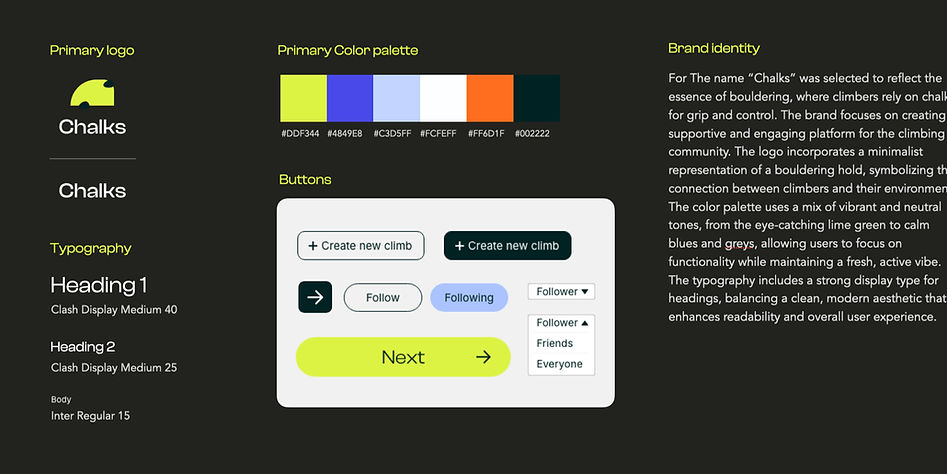


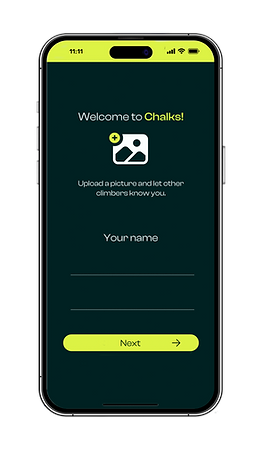
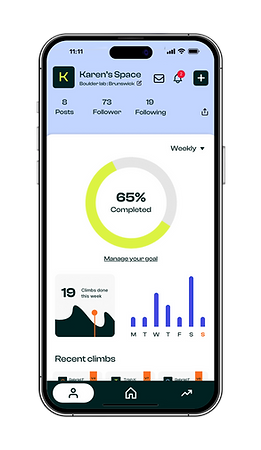
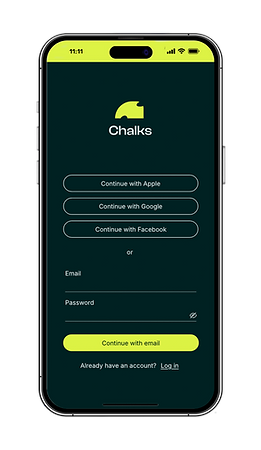

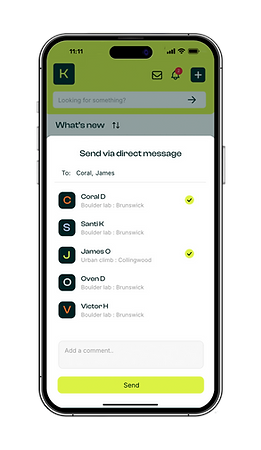
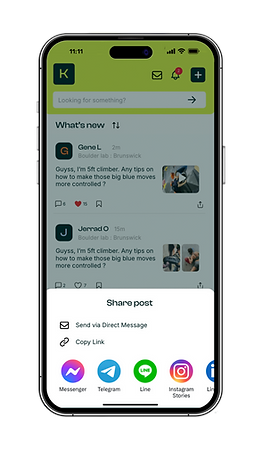
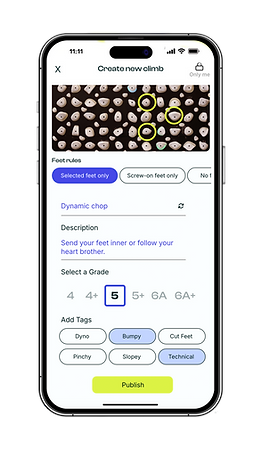
MOBILE INTERFACE DEVELOPMENT


DESKTOP INTERFACE DEVELOPMENT
Development process, design decisions, and key takeaways from prototype testing
Prototype Report
-
95% of test users found the app layout intuitive, giving it an average rating of 4.6 out of 5 for ease of navigation. Most users noted that the flow from Home → Log Climb → Stats felt natural and required little explanation.
-
Users rated the Community Board feature highly, with an average score of 4.8 out of 5. Testers appreciated having a space for casual beta sharing and said it felt “supportive” and “less intimidating than asking people at the gym.”
-
90% of participants said the progress tracking visuals motivated them to climb more consistently. They highlighted the clarity of the stats screen and the simple logging system as major strengths.
-
Testers valued the Kilter-style set creation tool, describing it as fun, fast, and “surprisingly easy to experiment with.” Many said they would use it to create problems for friends or for personal training goals.
-
100% of users gave the overall usability of the prototype a 9 or 10 out of 10, noting the clean design, friendly tone, and modern feel. They felt the app captured the social and creative side of climbing without overwhelming beginners.
“Super clean and easy to use. I’d actually log my climbs with this. Everything feels straightforward and not overwhelming.”
“The stats page is my favourite. It makes progress feel rewarding instead of stressful. I can instantly see how I’m improving.”
“Love the community board. It feels like real climbing energy… people sharing beta without the pressure of asking at the gym.”
“The design is modern, friendly, and not too busy. It feels like an app made for climbers, not just a training tool.”
To be continued
If Thaiwander were to move to the next phase, here’s what I’d explore:
-
Strengthening the community layer by improving participation in comments, shared beta, and personal profiles, while acknowledging that many climbers prefer low-pressure social spaces.
-
Introducing a “Nearby Gyms” and “Set Map” feature so users can instantly see new routes, freshly set walls, or trending climbs in their area.
-
Developing personal training tools such as streak tracking, level progression, and tailored challenges to help climbers stay motivated over time.
Key takeaway
The project was a major learning milestone and gave me a deeper understanding of designing for niche communities. At first, I focused heavily on creating new features, but I soon realised that value often comes from refining what climbers already do naturally: track progress, share beta, and stay motivated.
Chalks reinforced the importance of clarity, accessibility, and building digital spaces that feel welcoming rather than intimidating. The process highlighted that strong user experience often comes from thoughtful improvements, not reinventing the entire system.









